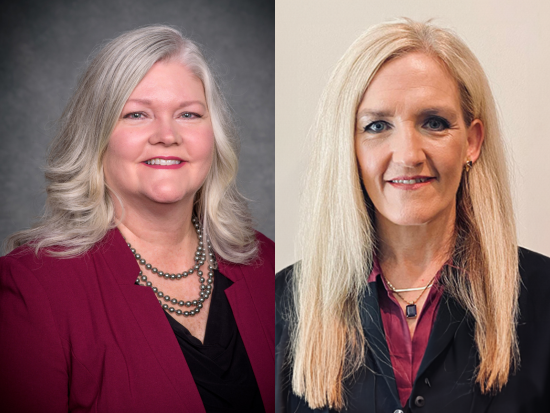 The University of Alabama at Birmingham Department of Neurosurgery Executive Administrator Donna Bailer, J.D., LL.M, and Operations Administrator Kirsten Yelvington, MSHA, recently presented at the Neurosurgery Executives’ Resource Value and Education Society (NERVES) annual meeting.
The University of Alabama at Birmingham Department of Neurosurgery Executive Administrator Donna Bailer, J.D., LL.M, and Operations Administrator Kirsten Yelvington, MSHA, recently presented at the Neurosurgery Executives’ Resource Value and Education Society (NERVES) annual meeting.
NERVES is the premier national society for neurosurgery practice administrators.
On Thursday, May 2, 2024, during their presentation, “Using the NERVES Socio-Economic Survey to Revamp Faculty Compensation,” Bailer and Yelvington discussed an innovative approach used in the revision of the Department of Neurosurgery’s physician compensation plans.
The NERVES Socio-Economic Survey data was used by the Department of Neurosurgery to update its physician compensation plans for all adult and pediatric neurosurgery medical doctors, a neurointerventional radiologist and a neurologist. This revamp came on the heels of directives from UAB for new compensation plan requirements.
Bailer and Yelvington walked session attendees through the new institutional directives, the approach and goals of the new plans for the department, academic data and rank issues, fixed and variable pay decision points, the extrapolation of survey data into a chart with 5 percentile increments, an approach to account for additional duty pay and the incorporation of a discretionary pool for extraordinary accomplishments.
“I was pleased to see the room full of administrators wanting to learn more about our approach to the compensation plan changes we made and how we incorporated the NERVES data. Every practice’s compensation plan will need to fit its unique challenges, but we hope our presentation provided fresh ideas and a checklist of decision points,” said Bailer.
As part of their presentation, Bailer and Yelvington noted that the UAB Department of Neurosurgery, which boasts 30 faculty members and 21 residents, performs 5,500 cases annually, marking a 35% rise in case volumes over the last 10 years.
Before using the NERVES Socio-Economic Survey for compensation planning, the department referenced the Association of American Medical Colleges’ (AAMC) Faculty Salary Report and Vizient, Inc. benchmarks for salary and wRVU planning, respectively.
To initiate the revision of the existing physician compensation plans, a compensation committee was formed within the department. The appointed committee members were selected intentionally to represent a diversity of rank, subspecialty, gender, administrative roles, etc., to ensure that a broad range of ideas were presented.
Over the span of eight months, the committee convened more than 20 times to better understand the current compensation plans and how they could be revised to best meet the institution’s new directives, while also limiting major changes.
The departmental compensation committee created various plan models based on the input from committee members to ensure the final plan limited major pay changes and would remain financially stable.
Bailer and Yelvington’s goal was to better prepare participants to address decision points they may face while developing their own compensation plan using the detailed NERVES annual survey data.